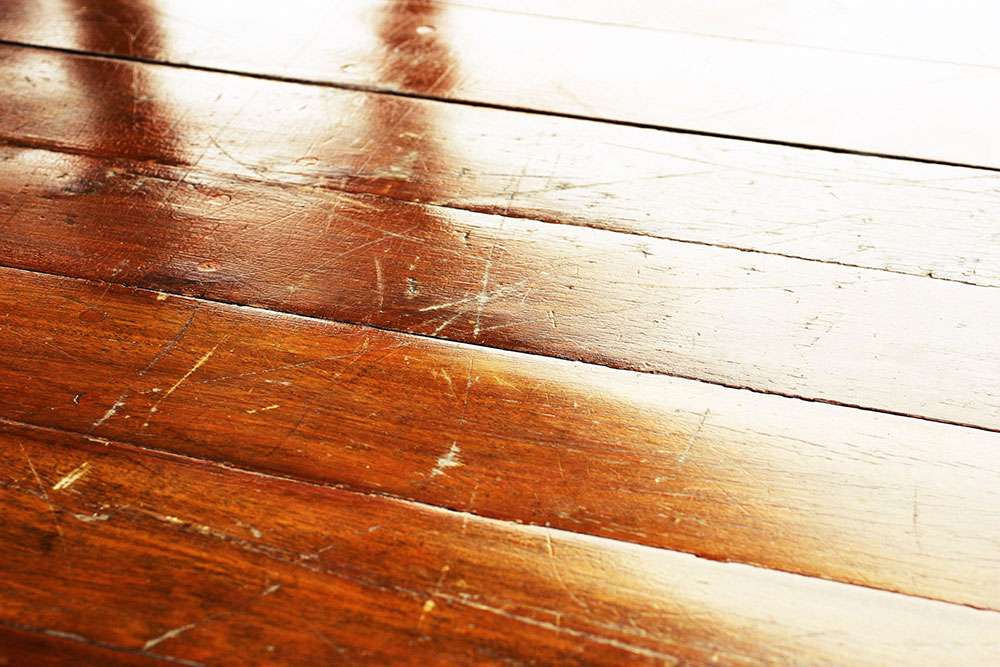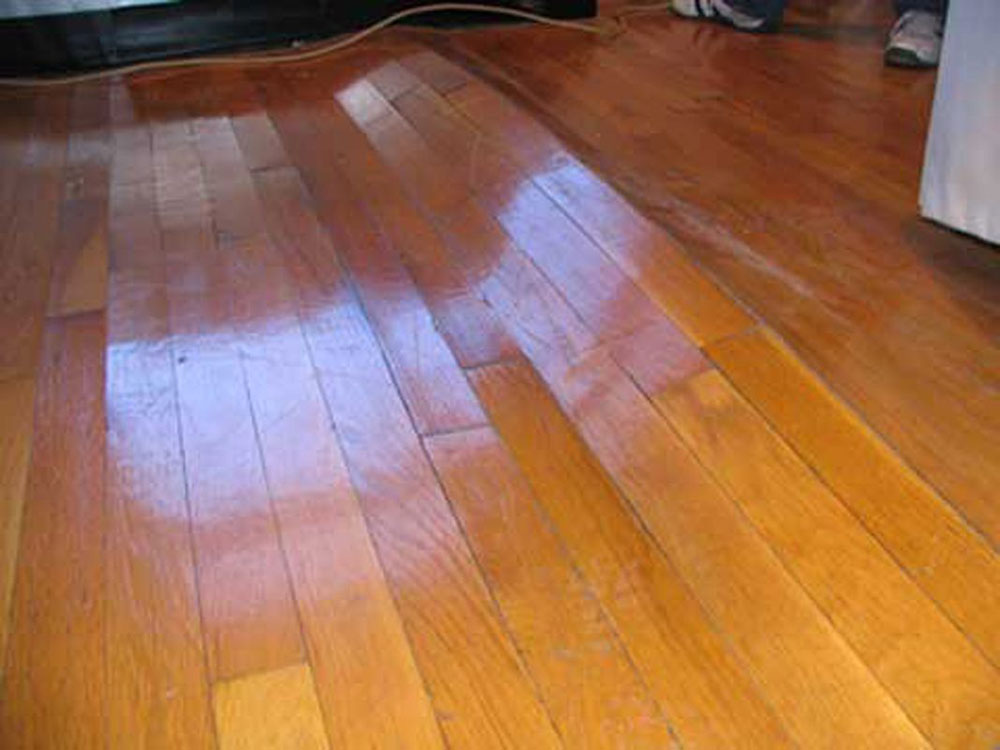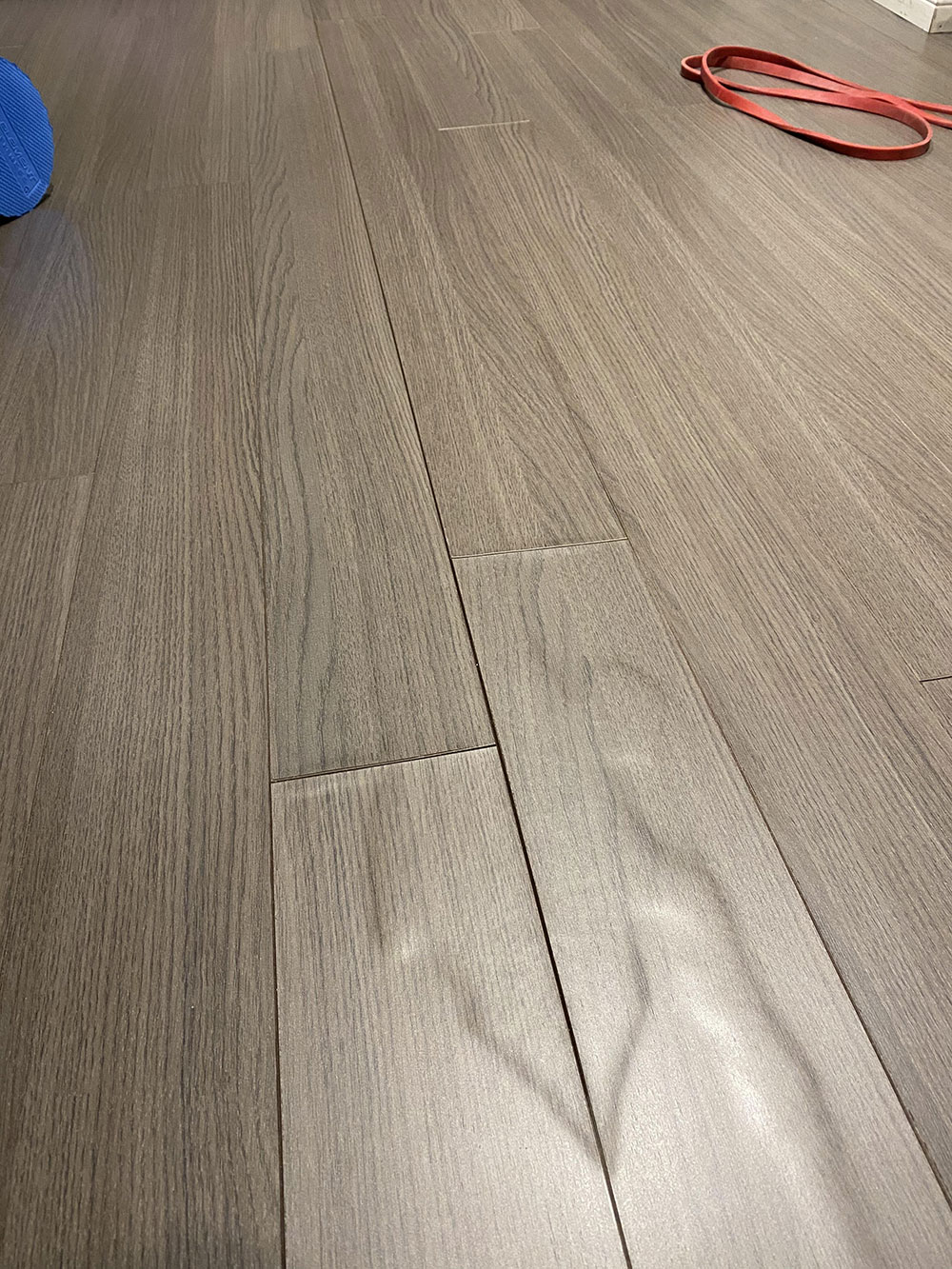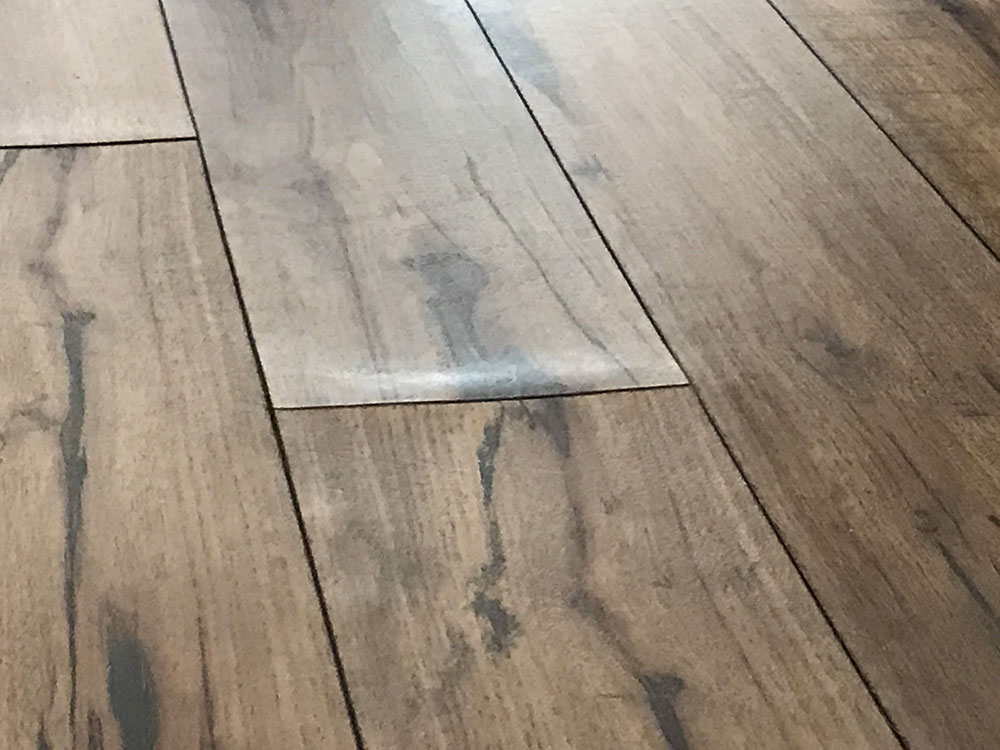Advertisement
If you use laminate flooring in your house, the odds are you’re well aware of its finer qualities. Not only is it sturdy, but affordable as well. This combination is hard to come across these days. Add to that the countless style laminate floors come in and you’ll soon wonder why you even bothered considering other options.
This combination makes laminate flooring perfect for residential homes, especially for rooms where you spend a lot of time. Another notable perk is that you can install the entire floor yourself, even if you don’t have much experience with DIY projects.
But while laminate planks have many virtues, they’re not without their flaws. Its biggest weakness is water. Although laminate flooring can handle a few drops of water, large amounts lead to extensive damage. And by damage, we mean the infamous swelling.
Luckily, a bit of regular maintenance can go a long way. In this article, we’re going to provide you with a DIY guide on how to fix swollen laminate flooring in no time.
What makes laminate floors so popular?
Laminate floors first came to be in 1977. A Swedish company called Perstorp used the lamination process to turn leftover wood products into flooring. The process involves several steps, such as exposing the wood to extreme heat, high pressure, and special chemicals.
Ever since then, it’s been growing in popularity. And today, most households use a laminate floor in at least one room.
Here are the 4 reasons laminate flooring is so widespread:
- Affordable: Unlike the alternatives, laminate flooring is a very affordable option.
- Great style selection: Laminate floors come in several styles and finishes. Companies often design them to resemble wood, stone, or tile that looks like the real deal. This versatility makes them compatible with just about any home design style out there.
- Easy installation: While you can’t install most traditional flooring options alone, that isn’t the case with laminate plans. You can handle the installation yourself, even if you’ve never done it before.
- Sturdy: Laminate flooring is surprisingly resilient, especially to mechanical damage. This makes it an excellent option if you have children or pets. The only thing the laminate floor doesn’t handle well is moisture. Thus, you shouldn’t use it in bathrooms and laundry rooms.
What leads to swollen laminate flooring? 5 common causes to look out for
As the saying goes, prevention is the best medicine. Even if your laminate flooring isn’t swollen today, it can still happen tomorrow. And even if you do fix it, the problem will keep returning unless you address the underlying issues.
Here are the 5 most common reasons behind swollen laminate flooring:
You didn’t leave enough space between the laminate planks
Laminate boards are sensitive to fluctuating temperatures. As the temperature changes, they tend to expand. If you didn’t leave any gaps between them, this expansion will cause the laminate planks to lift and swell.
We recommend leaving at least a one- or two-inch gap between each laminate plank to avoid this issue.
You use laminate flooring in high-moisture areas
If there’s one thing laminate flooring can’t handle, it’s excessive moisture. Although the finish tends to be waterproof, laminate boards will soak up moisture during long-term exposure. Once this happens, they will begin to swell.
If you want to avoid this, consider using other flooring options in bathrooms, kitchens, and laundry rooms.
Your laminate planks get wet too often
While moisture will damage laminate boards over time, water spills and pipe leaks will have an immediate effect. Make sure you address any potential spills as quickly as possible. Otherwise, you may have to deal with swollen laminate flooring.
Wet-mopping is the reason why your laminate surface swells. Thus, we advise against mopping or steaming your floor. Doing so will damage the finish, further reducing the floor’s resistance to moisture.
Your laminate flooring’s quality isn’t the best
A good laminate board should resist pressure well. If it’s low-quality, it may bend or break over time.
Make sure you always check the density, sheeting, and locks of your laminate boards. If the locks are bad, the planks will break under pressure.
Your substrate layer is too thick
While using a multi-layered substrate is great for leveling the floor, make sure you don’t overdo it. If it’s too thick, your laminate flooring’s lock will weaken. This can cause creaking, swelling, and even breaking.
Make sure you fix swollen laminate flooring as soon as you can
Though it may sound cliche, don’t put off repairing your damaged laminate boards until later. Otherwise, the damage will only grow more severe. As a result, the repair costs will rack up steadily. You might also end up having to completely remove and reinstall your entire laminate flooring.
And while you can fix damaged laminate surfaces by using new boards, it’s much better to avoid it altogether.
The most dangerous cause behind swollen laminate flooring is water leaks. The source can be anything from the toilet, pipes, and other appliances. As the water floods the entire room, your whole laminate flooring will be damaged. Make sure you handle all leaks as quickly as possible to mitigate your losses.
How to spot damaged laminate flooring
Once you spot a damaged laminate plank, the next step is to identify what caused the damage in the first place. If the damaged plank is bubbling up or swelling, check for any signs of humidity and water spills. These are the most common reasons swelling happens.
When you examine a damaged plank, you may notice bubbling, splitting, buckling, crackling, or cupping. In case of severe damage, you may also have to deal with discoloration or even mold growth.
Here’s how you can pinpoint what caused the issue:
- High relative humidity: This most commonly happens in bathrooms and rooms with poor ventilation. Using some kind of moisture barrier may help you prevent the issue from reoccurring. Alternatively, you can consider other flooring options.
- Excessive moisture caused by cleaning: Using a wet mop or a damp cloth to clean your laminate floor may increase the moisture and cause it to swell slightly.
- Water leakage: Water leaks increase the humidity, causing the board’s tension to increase. As a result, it will swell.
- Air-conditioner leaks: Although less common, your air-conditioner may leak condensation, which accumulates on the floor.
- Pets’ urine: If you have pets such as kittens and puppies, they may urinate on the floor. This can also cause it to swell.
How to assess the extent of the damage
Once you determine the cause of the issue, it’s time to look at the extent of the damage. Examine every bubbled or warped plank that no longer fits among the others. We recommend marking the damaged areas in some way. Some good options would be sticky notes and markers.
If you don’t know how to deal with your damaged laminate flooring, you might be better off reaching out to an expert.
How to fix swollen laminate flooring
If the damage isn’t too extensive, you can likely fix your swollen laminate flooring without replacing it completely. Excess moisture, water spills, and lack of gaps between planks are the most common reasons this happens.
Here are the steps you can take to repair swollen laminate flooring:
- Purchase a laminate repair kit
- Use a dehumidifier to reduce the moisture in the area
- Use a hairdryer to dry your laminate floor: Keep in mind that this method only works shortly after moisture exposure. If you act quickly enough, you can restore the planks to their formal shape. However, the damage becomes permanent once enough time has passed.
- Burst smaller bubbles: To remove smaller bubbles, burst them by placing a damp cloth over the affected areas. Then, cut the area with a knife. And finally, smear the slit with wood glue and hold the veneer down. For the best results, we recommend applying weight to the affected area for at least one day.
- Replace individual damaged planks: If the damage is too extensive, you won’t be able to fix the plank. However, you can still replace it. The good news is you’ll likely have a leftover laminate board or two. Once the area has dried, you can simply install the new board. If you’re out of spare, your best bet is to look for a color that matches the original one as closely as possible.
When to seek professional repair services
Although laminate floors are reliable, you might have some issues with them. This is especially common if you place them in humid areas. It may also happen if you don’t take proper care of them.
Regardless, it’s never too late to fix the issue. In the best-case scenario, you can replace your swollen laminate flooring without replacing it entirely. All you have to do is polish the damaged areas.
But what if the damage is too extensive? While replacing a damaged laminate plank isn’t difficult, not everyone is confident carrying out DIY projects. If you count yourself among them, don’t worry. It’s better to swallow your pride and reach out to a professional. If you attempt to handle the repairs yourself, you may only end up causing even more damage.
Pros and cons of laminate floors
If you’re passionate about home design and improvement, you likely know that no option is strictly black and white. Laminate floors are no exception. Although they come with many benefits, they aren’t without their drawbacks.
Pros of laminate floors
- Easy maintenance: You only need a vacuum or a broom to keep your laminate floor clean. You can also invest in special laminate floor cleaners for even better efficiency.
- Physical durability: Laminate planks handle pressure and tension better than other types of floors.
- Low cost: A laminate floor is much cheaper compared to the alternatives.
Cons of laminate floors
- Sensitive to moisture: Water and moisture can wreak havoc on your laminate flooring, especially during prolonged exposure.
- Difficult to repair: Once the planks are damaged, you can’t sand or refinish them to fix the damage – you’ll have to replace them completely. You might also struggle with getting your hands on your original tile style.
How to prevent swollen laminate flooring – 5 principles to follow
Your journey doesn’t end with just fixing the issue. If you don’t take proper preventative measures, you may have to deal with this issue again.
Here are 5 principles that will help you prevent swollen laminate flooring:
Don’t install it in high-moisture areas
As a rule of thumb, you should keep your laminate floor outside of rooms with high humidity. These include bathrooms, kitchens, basements, and laundry rooms.
If you wish to install it anyway, make sure you follow these steps. Hold the underlayment against the wall and cut it two inches. Once you install it, cut this underlayment with a utility knife. Then, fill the expansion areas. Finally, fill the perimeter areas with silicone caulk.
Inspect the doors and windows for leaks
Most laminate floor owners report swelling near the doors and windows. This happens when rain manages to get past these openings. As it accumulates, the planks will begin to warp more and more. To avoid this, make sure these areas don’t leak.
Clean water spills as soon as you can
The worst thing you can do is leave your laminate floor wet for a long time. Although the spill may be small, it will soak into the planks over time. You can prevent this by cleaning spills as soon as they happen.
Prepare your planks for the environment
Once your dream laminate planks arrive, you might be tempted to install them right away. However, you should first let them adapt to the new environment, particularly to the moisture.
To do this, spread the boxes with the planks side by side on the floor. This will allow them to adapt to the humidity levels in your house. You should leave them out like this for at least two days.
During this time, make sure you air out your room frequently. Using the air-conditioner may help you speed up the process.
Control the humidity levels in your house
Humidity levels also depend on your location. In some areas, the humidity level might be naturally high. If so, consider investing in a dehumidifier to prevent damage to your floor.
How to take good care of your laminate flooring
Luckily, laminate flooring is a very low-maintenance option. All you need to do is follow these principles:
- Clean spills as soon as they happen
- Sweep the surface of the planks regularly
- Use a flat-head spray mop for greater efficiency
- Repair damaged boards as soon as you stop them
- Control the moisture in the room
How long before water damages your laminate flooring?
Your laminate flooring will start to warp after being submerged for several hours. That’s why it’s best to clear any spills as quickly as they happen.
How to remove water from under laminate flooring
In case of a pipe leak, the water will soak your laminate planks from below. Thus, you’ll have to first stop the leak and then remove the affected planks.
The next step is to remove the water.
Once you’re done, wait for the area to dry up. You can use a dehumidifier to speed up this process. Once it’s completely dry, you can reattach the planks.
Our final thoughts on how to fix swollen laminate flooring
While many people opt for laminate flooring because of its great value for money, it does have its shortcomings. Two of its biggest weaknesses are moisture and water. While a few drops here and there won’t harm it, prolonged exposure will make the planks warp and swell.
The best way to deal with this issue is to prevent it altogether. Thus, we don’t recommend installing laminate flooring in humid areas such as bathrooms and laundry rooms. You should also clear any spills and leaks as fast as you can.
But once the damage’s done, your best option is to repair the swollen areas. However, you can only do this if they are small. If the damage is too extensive, you’ll likely have to replace the plank.
If you enjoyed reading this article on how to fix swollen laminate flooring, we also wrote on removing glued-down laminate flooring, ending laminate flooring at doorways, installing laminate flooring on a concrete basement floor, drying laminate flooring with water under it,
Oh, and that’s not all. We have several more articles on laminate flooring like sealing laminate flooring seams, installing laminate flooring on walls, installing laminate flooring without transitions, repairing laminate flooring, installing laminate flooring on stairs, the best waterproof laminate flooring brands, and how to stagger laminate flooring.




